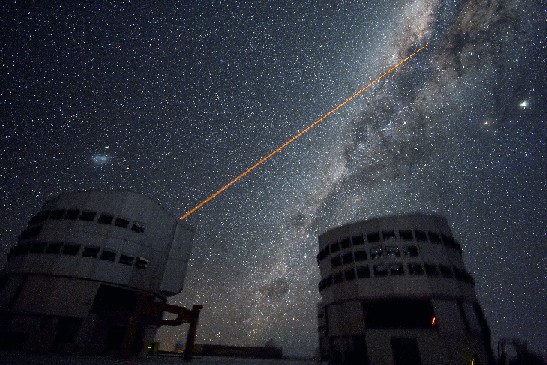
Image of the European Very Large Telescope credit ESO/Y Beletsky
If the telescope had never been invented, the known universe would consist of six planets, one moon, and a few thousand stars. It’s therefore fitting that one of the “official” products of the International Year of Astronomy 2009 (IYA2009 should be a film history of this astoundingly important device.
Unfortunately, Eyes on the Skies is not so much a film as an hour-long public relations special, with the sheer weight of official approval — it’s a joint production of IYA2009, the International Astronomical Union, the European Space Agency, and the European Southern Observatory — tending to smother its occasional flashes of character. True, there are a few exceptions, particularly in the first two chapters, which cover the telescope’s history from Galileo’s sketches to the 5 m Hale Telescope on Mount Palomar in California. We learn, for example, that legal disputes prevented anyone from earning a patent on the telescope, and that William Herschel’s biggest scope required four servants to operate its complicated system of ropes and pulleys. A little later, presenter Joe Liske of the European Southern Observatory — known here, rather cringe-makingly, as “Dr J” — does a fine job of explaining in simple terms why reflecting telescopes can be bigger than refractors.
Once we reach the modern era, however, the slick artists’ impressions take over. At this point, Eyes on the Skies becomes a visually-stunning laundry list of ambitious projects, and its determination not to leave any of them out detracts from the overall story. The film’s website suggests that it could be shown at “public events carried out by educators, science centres, planetariums, amateur astronomers etc.”, but even with this audience in mind, one suspects that its producers might have been better off just sticking microphones in front of a handful of astronomers and asking them about their work. Indeed, the diverse group of bloggers over at IYA2009’s own Cosmic Diary website would have been a good place to start. In their case, “official” status has not lessened their passion or creativity, and they are far better ambassadors for astronomy than this beautiful but bland production.


